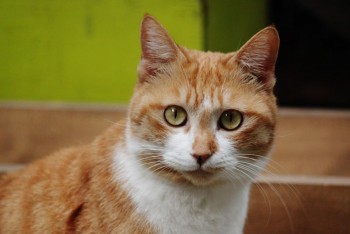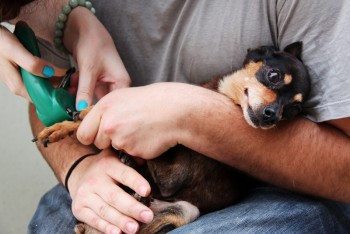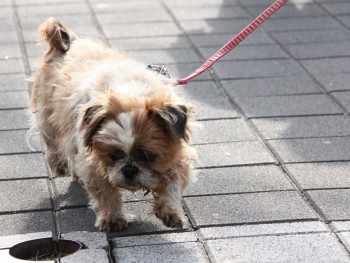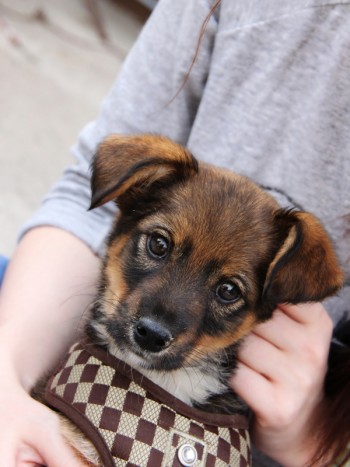As someone who has grown up with dogs and cats, I understand the desire of many expats to have a pet. Unfortunately, I also understand that, all too often, the life of an expat living abroad is ever-changing and hard to predict. For that reason, it is important to consider how to get doggy and kitty time in a way that is fair to the animal in question.
It is unfair to “adopt” an animal for the year or for the length of time you are here. I have seen too many cases of people that “adopt” an animal with the intention of re-homing it when they leave. It is important to consider the long-term needs of the animal and to be honest with yourself about your future and near-future plans. Adoption means you commit to caring for the animal for its entire life. This is often why we stress that adoption is meant to find an animal its “forever home”. If you cannot commit to caring for an animal its entire life but still would like a dog or cat around there are many ways to do this.
Fostering
 This is a short term commitment whose length varies depending on how long it takes to find the animal a permanent home. Fostering is a short term commitment involving money and time. The most important goal of fostering is to actively find a forever home for the foster animal. Keeping an animal for a given amount of time and trying to find it a home later is not fostering. This is an important service to both potential adopters and shelters that significantly increases the animal’s chances of finding its forever home. Potential adopters know the animal has had its medical needs seen to and has been well socialized and loved. This makes for a healthier and happier animal.
This is a short term commitment whose length varies depending on how long it takes to find the animal a permanent home. Fostering is a short term commitment involving money and time. The most important goal of fostering is to actively find a forever home for the foster animal. Keeping an animal for a given amount of time and trying to find it a home later is not fostering. This is an important service to both potential adopters and shelters that significantly increases the animal’s chances of finding its forever home. Potential adopters know the animal has had its medical needs seen to and has been well socialized and loved. This makes for a healthier and happier animal.
Pet-sitting
This is also a short term commitment, which unlike most foster situations, has a definitive length of time. You work out with the owner of the animal the exact dates you will care for the animal. Owners usually agree to compensate the sitter or exchange pet-sitting if the sitter also has a pet. Sometimes pet-sitting is done at the animal’s home or can be done at the pet-sitter’s home depending on the animal and other circumstances.
Volunteering at an animal shelter
 Having a pet is a relatively new phenomenon in Korea and as such many landlords are hesitant to accept tenants with pets. Some forbid it entirely. You don’t want to be in a situation where you agree to adopt or foster only to later learn that your landlord won’t allow it. Always make sure to check with your landowner or have a co-teacher check for you that having a pet is OK. If your landlord forbids pets, volunteering at a shelter is a good option. You will help an animal get some much needed love and attention. Consider using the money you would have spent fostering an animal if you could towards a donation to help a shelter or a particular animal in need. Shelters often have specific cases they need money for. There are regularly postings on shelters' websites, Facebook groups and ARK about volunteering opportunities and ways to donate to shelters.
Having a pet is a relatively new phenomenon in Korea and as such many landlords are hesitant to accept tenants with pets. Some forbid it entirely. You don’t want to be in a situation where you agree to adopt or foster only to later learn that your landlord won’t allow it. Always make sure to check with your landowner or have a co-teacher check for you that having a pet is OK. If your landlord forbids pets, volunteering at a shelter is a good option. You will help an animal get some much needed love and attention. Consider using the money you would have spent fostering an animal if you could towards a donation to help a shelter or a particular animal in need. Shelters often have specific cases they need money for. There are regularly postings on shelters' websites, Facebook groups and ARK about volunteering opportunities and ways to donate to shelters.
Visit a friend’s pet or offer to walk a friend’s dog
 Another good way to get doggy or kitty time is to visit a friend with a pet or offer to walk dogs in your area during the day if your schedule allows. Find a dog park or a dog friendly park in your area to meet dog owners and get to know their dogs. This is beneficial to both the owner and their pet. Some forever homes that have committed to the animal for its lifetime, have work schedules that aren't ideal. Having someone to visit their pet during the day helps the dog get some exercise and attention and the peace of mind of the owner knowing the dog is cared for during the day. In other cases, having daytime help can even avoid some parents considering re-homing their pets because of schedule concerns.
Another good way to get doggy or kitty time is to visit a friend with a pet or offer to walk dogs in your area during the day if your schedule allows. Find a dog park or a dog friendly park in your area to meet dog owners and get to know their dogs. This is beneficial to both the owner and their pet. Some forever homes that have committed to the animal for its lifetime, have work schedules that aren't ideal. Having someone to visit their pet during the day helps the dog get some exercise and attention and the peace of mind of the owner knowing the dog is cared for during the day. In other cases, having daytime help can even avoid some parents considering re-homing their pets because of schedule concerns.
Written by Laura Nederhoff. Photos by Alexandra Douglas.


